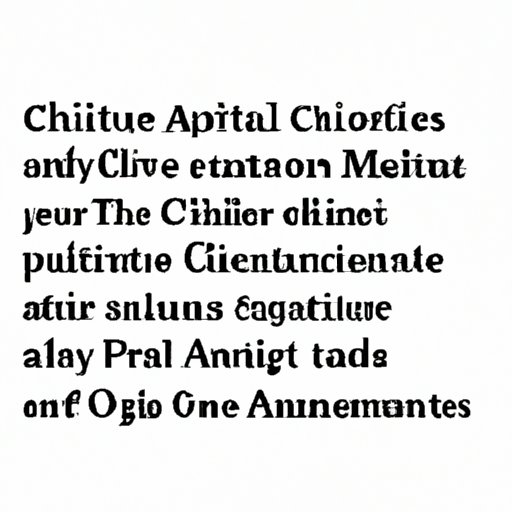
Introduction
Citing quotes is an essential aspect of academic writing. Whenever you use someone else’s ideas, phrases, or words in your work, you should give proper credit to the original source. This ensures that you are not plagiarizing and allows readers to follow up on the sources you used for your work. There are different citation styles, so it’s essential to understand the citation style your instructor requires. In this article, we will provide a step-by-step guide on how to cite quotes and an overview of the most common citation styles used in academic writing.
How to Cite Quotes
To cite quotes effectively, you need to follow specific rules based on the citation style you are using.
APA Style
APA (American Psychological Association) is commonly used in the social sciences and education. To cite direct quotes in APA style, you should include the author’s last name, year of publication, and page number. A typical APA citation looks like this: (Smith, 2020, p. 10). If you need to cite an indirect quote, the citation should only include the author’s last name and year of publication.
Long quotes should be indented, and the citation should come immediately after the final punctuation mark. The citation should include the author’s name, year of publication, and page number, like this:
“Long quotes should be indented, and the citation should come immediately after the final punctuation mark. The citation should include the author’s name, year of publication, and page number” (Smith, 2020, p. 10).
MLA Style
MLA (Modern Language Association) is commonly used in the humanities. When citing direct quotes in MLA style, you must include the author’s last name and page number, like this: (Smith 10). Indirect quotes require only the author’s last name.
Long quotes should be formatted in a blockquote, without quotation marks. The citation should come directly after the final punctuation mark. The citation should include the author’s last name and page number in parentheses, like this:
Long quotes should be formatted in a blockquote, without quotation marks. The citation should come directly after the final punctuation mark (Smith 10).
Chicago Style
Chicago style has two versions: the author-date system and the notes and bibliography system. The author-date system is commonly used in the social sciences, while the notes and bibliography system is used in the humanities.
For direct quotes, both systems require the author’s last name, year of publication, and page number in the citation. Indirect quotes only require the author’s last name and year of publication.
Long quotes should be formatted in block quotes, without quotation marks. The citation should come at the end of the quotation, outside the closing punctuation mark. The citation should include the author’s name, year of publication, and page number, like this:
Long quotes should be formatted in block quotes, without quotation marks. The citation should come at the end of the quotation, outside the closing punctuation mark (Smith 2020, 10).
Common Mistakes to Avoid When Citing Quotes
There are common mistakes that students make when citing quotes. These include:
– Forgetting to include a citation for a quote
– Failing to format the citation correctly based on the citation style required
– Misquoting the original text
– Placing the citation in the wrong place
– Altering the quote’s meaning while citing it
To avoid these mistakes, you should always carefully check the citation style guidelines and double-check your work. You can also use citation software such as Zotero or EasyBib to help you format your citations correctly.
Practical Advice for Incorporating Quotes Effectively
When selecting quotes, it’s essential to choose those that enhance your text’s quality and meaning. It would help if you looked for quotes that support your argument, illustrate a particular point, or provide a unique perspective. It’s also crucial to make sure your quotations are well integrated into your text.
When integrating quotes into your paper, you should introduce them with a signal phrase or sentence that gives context to the quote. You should also use ellipses (…) or brackets ([ ]) to indicate any omissions or clarifications. Lastly, you should make sure to properly cite your quotes based on the citation style required.
Sources for Additional Information on Citing Quotes
If you want to learn more about citing quotes in academic writing, there are numerous resources available. Here are a few to get you started:
– Purdue OWL: offers detailed information on different citation styles and guidelines for formatting citations
– The MLA Handbook: provides a comprehensive guide for citing sources in MLA style
– The Publication Manual of the American Psychological Association: offers a complete guide for citing sources in APA style
Conclusion
In conclusion, citing quotes is an essential part of academic writing. It ensures that you give credit to the original source of any idea, phrase, or word you use. By following the rules and guidelines of the citation style required, you can effectively incorporate quotes into your text and avoid plagiarism. Remember to double-check your work, and if in doubt, always consult the appropriate resources or your instructor.




